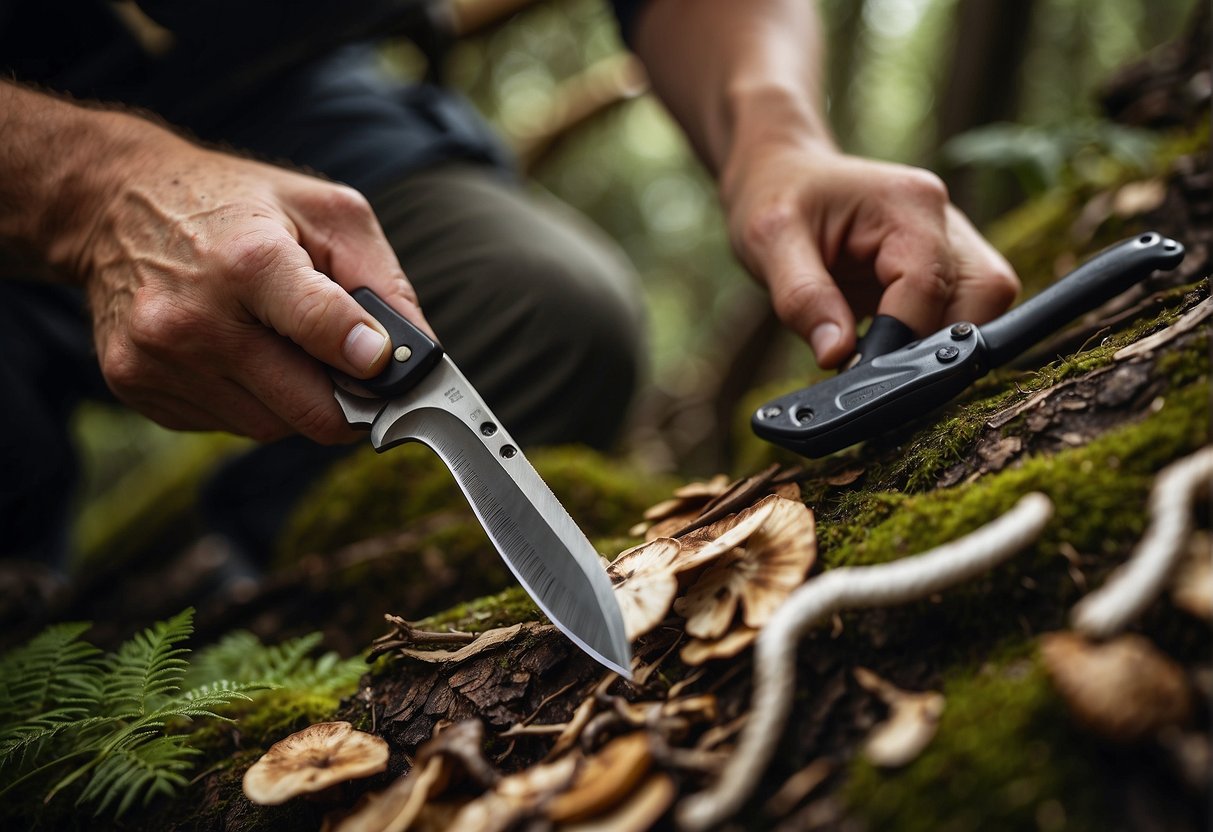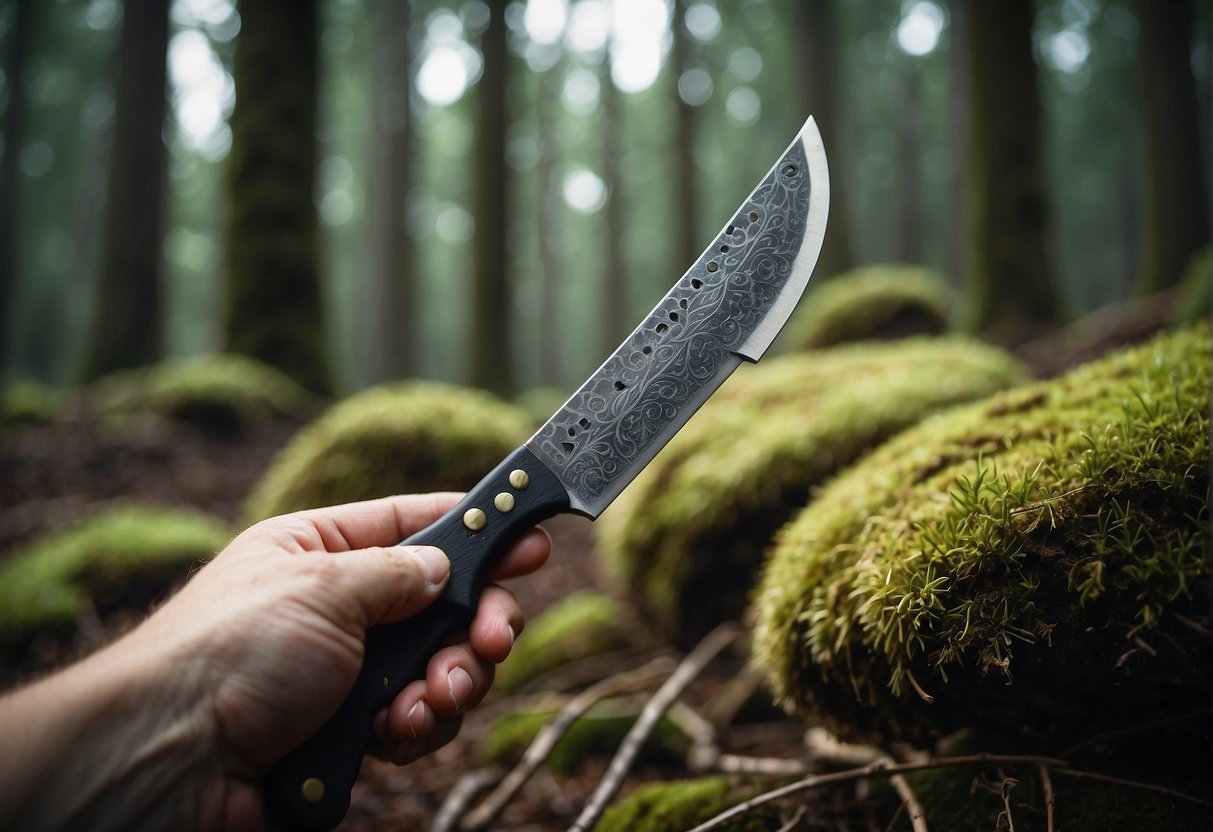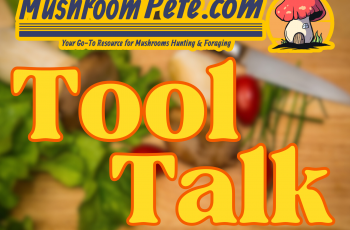Mushroom hunting is a pursuit that marries the thrill of the hunt with the delicate touch of foraging, offering you the chance to roam the forests and fields in search of these prized fungi. Choosing the right mushroom hunting knife can make all the difference in this endeavor. It’s not just about having a sharp blade—it’s about finding a tool that is specially crafted to handle the unique requirements of foraging mushrooms. Your knife is an extension of your hand, deftly slicing through dirt and plant material to gently harvest without damaging the delicate fruiting bodies.
As you venture into the world of mushroom hunters, you’ll learn that the ideal knife combines functionality with durability. The brushed edges of a dedicated mushroom knife help in cleaning the spores and dirt, while a curved blade ensures precise cuts. Moreover, these knives often come with additional features like a brush on the end to wipe away debris, ensuring your harvest is clean and ready for further inspection or immediate culinary use.
Picking the right equipment speaks not only to your preparedness but also to your respect for the craft and environment. Whether you’re eyeing a classic Opinel with its reliable build and thoughtful design, or a more upscale piece like the Helle Algonquin known for its lightweight, minimalist handle and superb craftmanship, the right knife will serve you well for seasons to come. It complements your skill, enhances your efficiency, and protects the integrity of the very mushrooms you’re so carefully seeking to collect.
Selecting the Perfect Mushroom Hunting Knife

When venturing into the wilderness in search of mushrooms, your knife is as essential as your basket. An appropriate mushroom knife ensures not only successful foraging but also your safety and the preservation of delicate fungi for future growth.
Understanding Knife Basics
Choosing the right mushroom knife begins with a basic understanding of knife components. The blade should be robust, typically made of stainless steel for its resistance to rust. The handle must offer a firm grip and if possible, should be a full tang, which means the blade runs through the entire handle, providing increased stability and durability.
Specialized Features for Mushroom Foragers
For mushroom hunters, a curved blade can be invaluable for gently cutting the mushroom stem without damage. Features such as a folding knife with a built-in bristle brush can assist in removing debris from your finds.
Materials and Durability
High-quality knives use blade materials such as stainless steel or high-carbon steel. While stainless steel is less prone to rust, high-carbon steel can hold an edge longer but may develop a patina over time. Handle material also varies from wood to plastic with trade-offs between aesthetic, weight, and durability.
Top Mushroom Knives Reviewed
The Opinel Mushroom Knife is celebrated for its efficiency and smart design, having a stainless steel blade and a varnished wooden handle that includes a brush for spore cleaning. Alternatively, the Buck 102 is a sturdy all-purpose option with a fixed blade perfect for harvesting.
Safety and Maintenance Tips
A good mushroom knife should include a safety lock mechanism to prevent accidental closures. It’s vital to sharpen your knife regularly for efficient cutting and to avoid injury from overexertion with a dull blade.
Ease of Use and Convenience
Your knife should be lightweight and easy to handle, with attributes that lend to the utility – such as a pocket knife format for easy retrieval and replacement. The handles should not only be comfortable but also designed for non-slip grip.
Cost-Effectiveness Analysis
Investing in the best mushroom knife doesn’t necessarily mean the most expensive. An affordable Opinel knife can meet most foraging needs without breaking the bank, offering both quality and value.
Accessories and Additional Equipment
Consider obtaining a foraging bag or a mesh bag for carrying harvested mushrooms, as they allow spores to disperse for future growth. Some mushroom knives come equipped with additional tools like a brush or a storage bag.
Carrying and Storage Solutions
A knife sheath or a holster can provide protection and quick access. Alternatively, a mushroom foraging bag can offer a specialized compartment for your knife, keeping it separate from the mushrooms to avoid damage or soil.
By considering these aspects, you’re well on your way to choosing a mushroom hunting knife that’s a perfect fit for your foraging adventures.
Advanced Mushroom Hunting Techniques

In mushroom hunting, obtaining a bountiful harvest requires more than just keen eyesight; it involves knowledge of mushroom species, appropriate harvesting methods, tools for recording discoveries, and a commitment to foraging ethically.
Identifying Mushroom Species and Habitats
Identifying the correct species and their corresponding habitats is crucial for a successful forage. Each mushroom species, like chanterelles, oyster mushrooms, morels, and porcini, thrives in unique conditions. For example, chanterelles often favor damp, mossy areas beneath hardwood trees. Always refer to a trusted mushroom identification guide or database when in doubt to ensure the safety and accuracy of your picks.
Proper Harvesting Methods
When you’ve spotted a patch of wild mushrooms, knowing how to harvest them properly protects the mycelium and future growth. The debate between cut versus pluck leans toward cutting; use a sharp knife to sever the mushroom stem above the soil to minimize environmental impact. This allows the mycelium – the vital fungal network underground – to remain healthy and productive.
Tools for Documenting Your Finds
It’s a good idea to carry a notebook and ruler with you to document your finds. Note the characteristics of your mushrooms, measure their size, and describe their habitats. These recordings not only assist in creating a personal foraging journal but also aid in honing your identification skills for future hunts.
Ethical Foraging and Conservation
Foraging with a conservationist mindset is your responsibility as a steward of nature. Ethical foraging means taking only what you need, respecting the land, and considering the environmental impact of your actions. Stick to established trails to prevent habitat disruption and never harvest more than what allows for sustainable growth of mushroom populations.
Preserving Your Mushroom Bounty
Once you’ve selected the perfect knife for mushroom foraging and harvested your mushrooms, it’s crucial to preserve your bounty effectively to maintain their taste and nutritional value.
Cleaning and Preparing Mushrooms
Before preservation, you need to clean your mushrooms properly. Use a soft brush to remove any debris or soil. This ensures you don’t introduce dirt into your preservation process and helps maintain the integrity of the mycelium for future growth. It’s important to avoid washing them directly under water as they can become too moist. Instead, wipe them gently with a damp cloth if brushing isn’t enough.
Drying and Storage Techniques
To prolong the shelf life of your mushrooms, drying is a dependable method. You can arrange them on a baking sheet lined with parchment to air dry, or use a food dehydrator for a more controlled method. Set the dehydrator at a low temperature to preserve the mushrooms’ flavor and nutrients effectively. Once dried, store them in an airtight container in a cool, dark place. Properly dried mushrooms can last for several months and are perfect for rehydrating in stews or soups.


